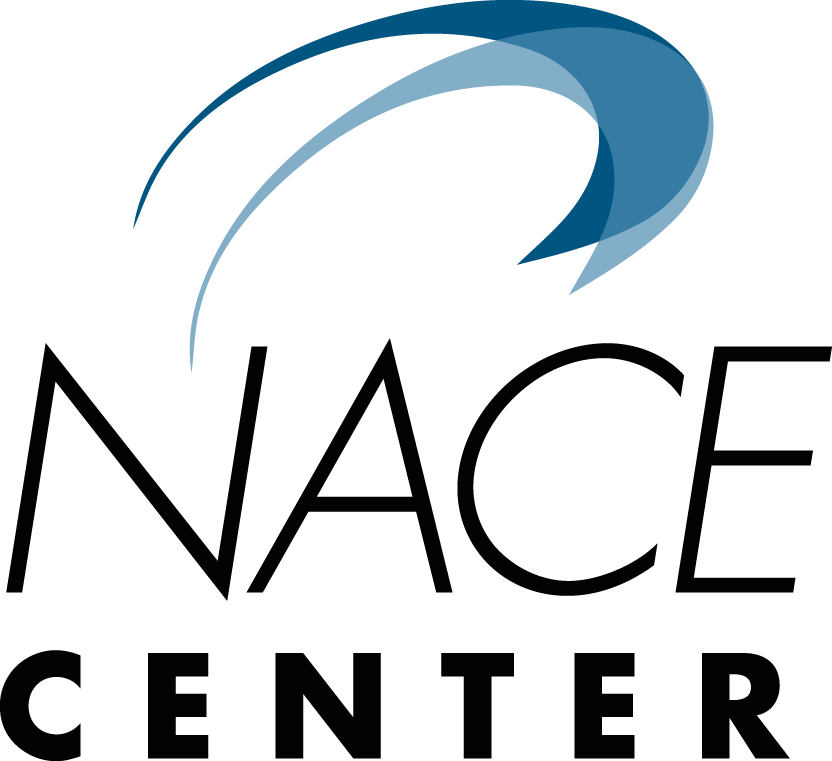NACE Journal / Spring 2025
The NACE Professional Standards for College & University Career Services indicate that “career services must regularly conduct systematic program evaluations, using quantitative and qualitative metrics, to support and improve programs and services, adjust to changing constituent needs, and respond to environmental threats and opportunities.”1
We believe that the Career State Inventory (CSI) can be used in this evaluation process. The CSI is a measure of the career decision state (CDS) much like a thermometer measures body temperature at a moment in time. At the conceptual level, the career decision state is a subjective state of being, a state of passing consciousness, regarding one’s career goals or aspirations. The CSI is a unique, brief questionnaire that assesses one’s capability to undertake career decision-making. It measures three constructs, a) certainty about a career goal, b) satisfaction with that goal, and c) vocational clarity and confidence in making a career decision at a point in time.2
This article seeks to help practitioners use data to demonstrate accountability for obtaining and sustaining the funding for career services. We focus on two things that can assist practitioners in demonstrating accountability: 1) the concept of the career decision space, and 2) a tool for measuring it, the Career State Inventory.3
Career Decision State
The CDS may also be thought of as a single continuum from being highly goal-directed, satisfied, and confident about career decision-making on the one hand to being immobile or frozen, dissatisfied, and confused on the other. When individuals seek career services or complete a career intervention, an overarching issue is often whether they are ready to make a career decision.
Readiness for career decision-making is a component of cognitive information processing theory (CIP) that alludes to the extent of one’s preparation for deliberate and effortful career problem-solving and decision-making.4 We note that this concept of career readiness for decision-making is different from the concept of career readiness for employment or job hunting provided by the National Association of Colleges and Employers.
The Career State Inventory
The goal of the CSI is to assist practitioners in assessing individuals’ readiness for career problem-solving and decision-making before or after an intervention. The CSI can be administered in the form of a brief survey or the questions can be unobtrusively embedded in another document, e.g., intake form, online survey, and so forth. It can also be adapted and used in an electronic format or a time-series design to assess changes during an extended career intervention, i.e., counseling, workshops.
More about the CSI
The CSI was developed by the authors working in a university research center. Career practitioners and researchers may freely use the instrument with the proper citation and credit. Access the CSI and its companion manual here.The CSI consists of five items measuring the three career decision state dimensions described above: a) certainty (1 item), b) satisfaction (1 item), and c) clarity (3 items). The CSI typically takes no more than 5 minutes to complete and score. (See Figure 1.)
Four scores are derived from administering the CSI—three component scores and the total score. The three dimensions of the career decision state include 1) the degree of certainty with respect to a career choice as measured by the occupational alternatives question (OAQ); 2) the extent of satisfaction with the choice(s) as measured by the satisfaction item, and 3) career clarity, an indicator of one’s vocational self-confidence in pursuing a career goal as measured by three items. Scores from the three dimensions are summed to provide a total CDS score ranging from 2 to 12. (See Figure 2.)


The OAQ and career certainty
The OAQ consists of two parts: The first asks the student to list all the occupations they are considering; the second asks them to identify their first choice. (If there is no first choice, the student can indicate “undecided.”)
Responses to the OAQ, which can be discussed in an interview, provide some indication of readiness for career decision-making. Four possible OAQ scores range from higher to lower levels of career decidedness, with lower scores (1, 2) indicating more decidedness and higher scores (3, 4) indicating less career decidedness. OAQ scores are positively correlated with scores on the Career Thoughts Inventory in which higher scores indicate more decision-making confusion, commitment anxiety, and/or external conflict.5,6
Career satisfaction
The satisfaction item asks respondents to rate their level of satisfaction with their responses to the OAQ using a 5-point scale, where 1=very satisfied and 5=very dissatisfied. Holland and Holland examined “not sure” (3 on the scale) and “dissatisfied” (4 on the scale) on the satisfaction item in their study of 1,005 high school juniors and 692 college juniors.7 They found that being dissatisfied or undecided was related to a wide range of psychological variables, including negative attitude, indecisiveness, anxiety, immaturity, and alienation.
Career clarity
Three true-false items drawn from the My Vocational Situation (MVS) measure the CSI’s career clarity dimension:
- “If I had to make an occupational choice right now, I’m afraid I would make a bad choice” (item 6);
- “Making up my mind about a career has been a long and difficult problem for me” (item 8); and
- “I am confused about the whole problem of deciding on a career” (item 9).8
These items were selected by reason and consensus among the CSI authors as having content validity for the career decision state with respect to vocational clarity and confidence regarding a career goal.
A false response to one of the items is scored 0 and a true response is scored 1. The range of scores on vocational clarity is 0 to 3, with a low score indicating a high degree of clarity and confidence in career decision-making, and a higher score indicating decision-making difficulty and confusion.
CSI total score
As shown in Figure 2, the 12-point continuum of the CDS profile ranges from being highly certain, satisfied, clear, and confident in one’s choice at one pole (2-3), to being frozen, dissatisfied, confused, and lacking confidence in making a choice (11-12). Mid-range scores (6 - 8) may be described as having one or more options, but still being uncertain about them, having doubts about one’s capability to make an appropriate career decision, and tentativeness in approaching one’s career choice.
CSI Use in Evaluating Career Interventions
CSI can be used in the evaluation of three career interventions: 1) a career course developed by an academic advising office; 2) changes in CSI results in a career class during a semester; and 3) evaluation of the online self-directed search (SDS) in college communication classes without counselor assistance.
Career course for life science students: The CSI was used to evaluate a college career course developed for life sciences students with lifelong aspirations to work in health services or research.9 This one-credit, 7.5-week course was developed in an academic advising office to help students explore self- and options-knowledge and improve their career decision-making skills. Students were asked to complete the CSI at the beginning and end of the class. All 27 non-first year students enrolled completed the CSI, and 22 (85%) completed it both times. Table 1 shows that at the beginning of the class, CSI total scores indicated that students were likely to be tentative, uncertain, and have doubts about their career decision state; at the end of the class, they had moved toward being more goal-directed, satisfied, and confident. At the end of the course, students were significantly more pleased with their occupational option list (satisfaction) and confident in their ability to make a career choice (clarity); however, there was no change in the level of career certainty because the students did not feel the need to change their occupational choices.
CDS changes over four time periods: In 2019, the CSI was used to examine the career decision state over time for students in a comprehensive university career class.10,11 The sample consisted of 151 undergraduates who completed the CSI four times, at the beginning of the class and after each of three units of the 15 week course (intervals of 7, 3, 5 weeks). As Figure 3 illustrates, the career decision state of all students became more positive over time, i.e., CSI mean scores dropped from 6.07 to 4.21. This study illustrates how the CSI can be administered to assess changes in a group’s career decision state as a result of instruction and student learning in a 15-week career class.

Online Self-Directed Search impact: Also in 2019, the effects of the online Self-Directed Search on the career decision state of 114 first- and second-year undergraduate students in English composition classes were examined.12,13 The students took the online SDS version alone with no counselor assistance.
Table 2 shows the pretest and posttest CSI scores for three groups of students. The posttest CSI scores show the positive impact of the online SDS with the students who were in a low career decision state (high scores), indicating high career uncertainty, high career dissatisfaction, and low career clarity regarding their career goals and aspirations at the beginning of the class. Participants using the online SDS with CSI total scores in the 8 to 12 range (low readiness) exhibited significantly (p < .05) lower scores on the posttest as compared to the pretest on all three CSI components as well as the total score. However, students with medium and high CSI pretest scores did not show significant score differences in the posttest. (See Table 2.)

Implications
Besides applications that involve career courses and the use of career assessments, we believe the CSI can be used to evaluate the impact of career internships/externships, field experiences, attendance at expos, shadowing, recruiter presentations, and more. Evaluation of career interventions and accountability are interrelated.14 The former produces evidence of the relative impact that interventions have on career choices of individuals or groups. The latter provides evidence of the responsible use of resources in a cost-effective way. We believe that the CSI is a useful tool for assessing both the evaluation of interventions and establishing accountability.
Despite its simplicity and ease of administration, the CSI has demonstrated its effectiveness as a measure of career decision readiness before, during, and after interventions. Measuring the effectiveness of interventions is a key component of program evaluation and accountability in the design and delivery of career services.
Endnotes
1 Professional Standards for College & University Career Services, Section XIII (2019). National Association of Colleges and Employers. Retrieved from https://naceweb.org/career-development/standards-competencies/professional-standards-for-career-services/.
2 Leierer, S. J., Peterson, G. W., Reardon, R. C., & Osborn, D. S. (2025, January 16). The Career State Inventory (CSI) as a Measure of the Career Decision State and Readiness for Career Decision Making: A Manual for Assessment, Administration, and Intervention (Fourth Edition). (Technical Report No 64). Retrieved from https://career.fsu.edu/sites/g/files/upcbnu746/files/The%20Career%20State%20Inventory%20Manual%204th%20ed%20%282%29.docx.
3 Leierer et al. (2025, January 16).
4 Sampson, J. P., Jr., Lenz, J. G., Bullock-Yowell, E., Osborn, D. S., &. Hayden, S. C. W (Eds.). (2023). Cognitive Information Processing: Career Theory, Research, and Practice. Florida State Open Publishing. https://doi.org/10.33009/fsop_sampson1123
5 Leierer, S., Peterson, G. W., Reardon, R. C., & Osborn, D. S. (2017, March 9). Career State Inventory. Center for the Study of Technology in Counseling and Career Development, Florida State University Libraries under a Creative Commons Attribution-No Derivatives 4.0 license.
6 Sampson, J., Peterson, G., Lenz, J., Reardon, R., & Saunders, D. (1998). The Design and Use of a Measure of Dysfunctional Career Thoughts Among Adults, College Students, and High School Students: The Career Thoughts Inventory. Journal of Career Assessment, 6, 115–134.
7 Holland, J. L., & Holland, J. E. (1977). Vocational Indecision: More Evidence and Speculation. Journal of Counseling Psychology, 24(5), 404–414. https://doi.org/10.1037/0022-0167.24.5.404 .
8 Holland, J. L., Johnston, J. A., & Asama, N. F. (1993). The Vocational Identity Scale: A Diagnostic and Treatment Tool. Journal of Career Assessment, 1, 1–12. https://doi.org/10.1177/106907279300100102.
9 Christianson, S. L. (2021). Creating and Using a Career Development Course to Prepare Life Science Students for Career Decision Making. (Doctoral Dissertation). https://keep.lib.asu.edu/items/161305.
10 Miller, A. K. (2019). The Impact of a Career Course on Undergraduate Students’ Career Decision State as a Function of Negative Career Thoughts(Order No. 13899781). ProQuest Dissertations & Theses Global. (2305192477). Retrieved from www.proquest.com/openview/807adfb5b1130c82d20ab8946636cd7c/1?pq-origsite=gscholar&cbl=18750&diss=y.
11 Reardon, R. C., & Lenz, J. L. (2018, March 1). Learning from a career course over 45 years. Career Convergence. https://ncda.org/aws/NCDA/pt/sd/news_article/153923/_self/layout_details/false
12 Dozier, V. C., Osborn, D., Kronholz, J., Reardon, R. C., & Peterson, G. W. (2019). The effect of the Online Self-Directed Search on the Career Decision State. Canadian Journal of Career Development, 18(2), 48–62.
13 Holland, J. L., & Messer, M. A. (2013). The Self-Directed Search. PAR.
14 Sampson, J. P., Jr., & Lenz, J. G. (2023). Designing and Implementing Career Interventions: A Handbook for Effective Practice (2nd ed.). NCDA.







